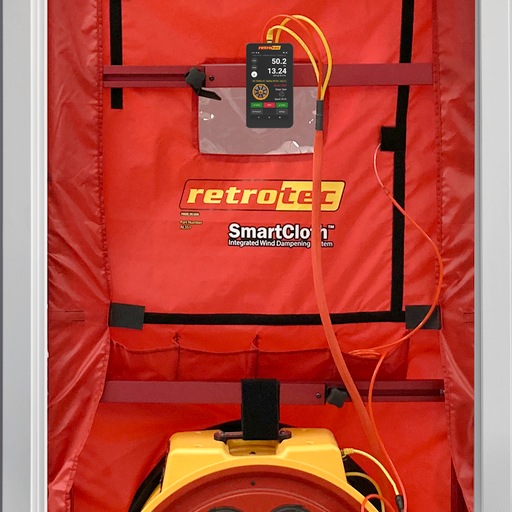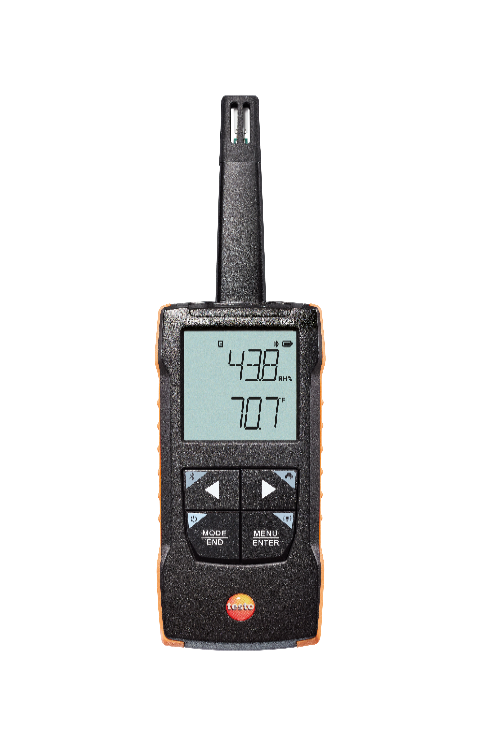Aug 21
What Equipment is Needed for an Energy Audit?
With the increasing focus on energy conservation and efficiency, the role of a home energy auditor has become more crucial than ever.
With the increasing focus on energy conservation and efficiency, the role of a home energy auditor has become more crucial than ever. These professionals are responsible for identifying areas where energy usage can be improved, leading to cost savings and reduced environmental impact. If you are currently working as a certified home energy auditor or considering entering this field, having the right energy audit tools is fundamental to conducting effective energy audits.
This guide will cover the essential energy audit instruments required for energy audits, from basic tools for those starting in the profession to advanced instruments used in more detailed assessments. We will also outline the key certifications, such as the BPI HEP Energy Auditor, and how access to proper energy audit tools and equipment’s can significantly improve the accuracy and effectiveness of your audits, ultimately benefiting both auditors and clients.
This guide will cover the essential energy audit instruments required for energy audits, from basic tools for those starting in the profession to advanced instruments used in more detailed assessments. We will also outline the key certifications, such as the BPI HEP Energy Auditor, and how access to proper energy audit tools and equipment’s can significantly improve the accuracy and effectiveness of your audits, ultimately benefiting both auditors and clients.
Basic Tools for Energy Auditing: What Every BPI Energy Auditor Needs
When you’re just starting as a certified home energy auditor, the most crucial tools are those that allow you to identify air leaks, inefficient heating systems, and insulation gaps. If you’re pursuing the Building Analyst – Tech or Pro certification, you'll need a reliable toolkit to perform accurate energy assessments
1. Blower Door System
A blower door package is essential for detecting air leaks in a home. The system, which includes a frame, shroud, and hoses, works by depressurizing the house and identifying drafty areas where outside air can seep in. This tool is vital for determining a home's air infiltration rate, which significantly impacts heating and cooling efficiency.
A great example of this tool is the Retrotec 5100 Blower Door System, a reliable choice for certified auditors.
A great example of this tool is the Retrotec 5100 Blower Door System, a reliable choice for certified auditors.

2. Digital Pressure Gauge
Used alongside the blower door system, a digital pressure gauge or manometer measures changes in air pressure within a building, helping auditors quantify how much air is leaking and where improvements can be made.
3. Combustion Analyzer
or homes with combustion-based heating systems like furnaces or boilers or water heater systems, a combustion analyzer is essential. This tool tests combustion appliances to ensure they are burning fuel efficiently and safely. It also helps detect carbon monoxide, a dangerous and deadly byproduct of all combustion.
4. Combustible Gas Leak Detector
A combustible gas leak detector with LEL is essential for identifying potentially explosive leaks in gas appliances or piping. This tool ensures that there are no hidden dangers in a home’s gas systems. LEL stands for Lower Explosive Level, obviously no explosive gases should be in a home. The CPS LSCG Leak Seeker is a useful tool to have in your auditing toolkit.

5. Pressure Pan
A pressure pan helps you measure leakage in a home’s ductwork, outlets, switches, recessed lights etc. It works with the blower door system to identify areas where conditioned air is escaping through ducts, which will lead to higher energy costs and comfort issues.
6. Fan Flow Device
A fan flow device measures the volume of air moving through ventilation fans such as the bath or kitchen exhaust fans to assure they meet standards. Optimal performance is imperative to remove moisture & and combustion byproducts from gas ovens or cooktops.
Advanced Tools for HEP Energy Auditors
For more complex audits, typically conducted by HEP Energy Auditors or HEP Quality Control Inspectors (QCI), advanced tools provide deeper insights into energy efficiency. These energy audit tools allow for the thorough examination of ductwork, thermal performance, and electrical systems.

1. Duct Tester or Duct Blaster Package
Duct leakage can result in significant energy loss, particularly in homes with poorly sealed ductwork. A duct tester or duct blaster package allows the auditor to measure leakage in the home’s duct system. By pinpointing the locations of leaks, auditors can recommend sealing improvements to reduce energy waste.
2. Infrared Thermal Imager
An infrared camera allows us to visualize how heat moves through the building envelope. These thermal imaging tools detect infrared light within the heat spectrum, making it easy to spot areas with air leaks or poor insulation and document those losses. By scanning different sections of your house with the camera, you can clearly see where energy is being wasted, leading to increased heating and cooling costs and comfort issues.
3. System Flow Plate
The system flow plate is another valuable tool for advanced audits. It measures airflow within HVAC systems to ensure that heating and cooling systems are working efficiently. The HVAC system needs to effectively move air from the HVAC unit to the living space. The System Flow Plate is commonly used to measure that air volume.
4. Electrical Multimeter or Kill-a-Watt Gauge
Assessing electrical systems, appliances and usage is also a key part of an advanced audit. A Kill-a-Watt gauge helps you measure the energy consumption of individual appliances and systems. By identifying which devices are energy hogs, or have phantom loads help you suggest upgrades or replacements.
5. Digital Thermohygrometer and Temperature Probe
The only missing component for mold growth in most homes is moisture. A digital thermohygrometer (humidity tester) and temperature probe are used to measure indoor air quality, specifically temperature and humidity levels. These factors directly impact both indoor air quality (IAQ), occupant comfort and health. The Testo 625 and PDT650 Temperature Probe are great options for precise readings.

Why Should You Get Certified?
If you’re currently working as an energy auditor or looking to enter the field, obtaining certifications like the BPI HEP Energy Auditor is crucial for career growth. The BPI Building Analyst - Tech certification focuses on basic energy auditing skills, while the HEP Energy Auditor certification expands your knowledge, allowing you to conduct more advanced audits and specialize in larger residential or even commercial properties.
Courses like those offered by EnergyScore® give you the necessary training to prepare for these certifications. The BPI Building Analyst Tech course is perfect for those entering the field, while the BPI HEP Energy Auditor Training is ideal for those looking to advance their careers.
Courses like those offered by EnergyScore® give you the necessary training to prepare for these certifications. The BPI Building Analyst Tech course is perfect for those entering the field, while the BPI HEP Energy Auditor Training is ideal for those looking to advance their careers.
Shippable Energy Auditing Tools for Students
For aspiring energy auditors, obtaining all of this specialized equipment can be daunting. However, EnergyScore® offers a convenient solution by providing shippable energy auditing tools for students. This allows those working towards their BPI Energy Auditor certification to rent essential tools, such as blower doors, digital pressure gauges, and combustion analyzers, at a fraction of the cost of purchasing them.
This service is particularly beneficial for students enrolled in our BPI Building Analyst Tech or HEP Energy Auditor Training programs. Renting equipment ensures that students have hands-on experience with professional-grade energy audit tools, preparing them for real-world energy audits and certification exams.
This service is particularly beneficial for students enrolled in our BPI Building Analyst Tech or HEP Energy Auditor Training programs. Renting equipment ensures that students have hands-on experience with professional-grade energy audit tools, preparing them for real-world energy audits and certification exams.
Take the Next Step in Your Energy Auditing Career
In today’s energy-conscious world, the demand for skilled energy auditors is on the rise. With EnergyScore®’s comprehensive certification programs, you can equip yourself with the skills and equipment needed to succeed in this growing field. EnergyScore® also offers direct discounts for Retrotec and Testo equipment, making it easier for you to access top-of-the-line tools. Login to the EnergyScore® Portal for instructions.

Are you ready to enhance your expertise? Explore courses like the BPI Building Analyst Tech or the BPI HEP Energy Auditor training to take your energy auditing career to the next level.
FAQ Answers
What if I don’t have the necessary equipment for a BPI certification exam or live far from a BPI Test Center?
If you don’t have the required equipment for your BPI certification exam, you can rent or borrow the tools from reputable providers. For instance, we at EnergyScore® offers shippable energy auditing equipment that you can rent specifically for certification purposes. This service ensures you have access to the professional-grade tools needed to complete the exam without the high upfront cost of purchasing each item.
What equipment is required for a BPI certification exam?
The equipment required for a BPI certification exam varies depending on the level of certification, such as the Building Analyst or HEP Energy Auditor exam.
Below is a chart of the equipment required:

We at EnergyScore®, offer toolkits for rent that contain all the necessary equipment to help you successfully complete the exam.
Below is a chart of the equipment required:

We at EnergyScore®, offer toolkits for rent that contain all the necessary equipment to help you successfully complete the exam.
What is the minimum equipment required to start a successful energy auditing company?
To start a successful energy auditing company, the minimum equipment you’ll need includes:
This equipment is essential for performing thorough energy audits, helping you identify inefficiencies and provide recommendations to clients, laying the foundation for a successful energy auditing business.
Equipment | Purpose |
Blower Door System | Detects air leaks in the home’s envelope |
Digital Pressure Gauge | Measures pressure differentials for air leakage |
Combustion Analyzer | Evaluates fuel-burning efficiency and safety |
Combustible Gas Leak Detector | Detects gas leaks in HVAC systems |
Infrared Thermal Imager | Visualizes heat loss through walls, ceilings, etc. |
Fan Flow Device | Measures airflow in HVAC systems |
Pressure Pan | Detects air leakage |
Electrical Multimeter or Kill-a-Watt Gauge | Monitors appliance energy use |
This equipment is essential for performing thorough energy audits, helping you identify inefficiencies and provide recommendations to clients, laying the foundation for a successful energy auditing business.
Subscribe to our newsletter now!
Get weekly updates on live streams, news and more right in your mailbox.
